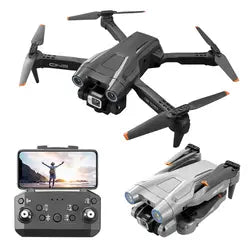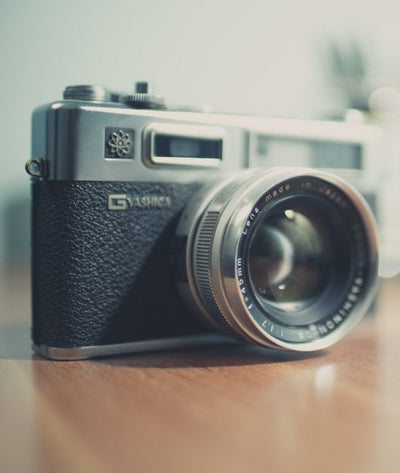
Feb 2023
0 Comments
MackTech Biz
Elevate Your Game: Choosing the Best Drone for Your Creative Needs in 2023
In recent years, drones have become increasingly popular among photographers, videographers, and hobbyists alike. As technology continues to advance, it can be challenging to choose the best drone that suits your needs. This article will provide an overview of the drone market, tips for selecting beginner drones, and explanations of drone types, sensors, features, camera types, GPS, and 3-axis gimbal.
Overview of Drone Market Size
The drone market is expected to grow at a CAGR of 18.3% from 2021 to 2028, according to a report by Grand View Research. In 2023, the global drone market size is expected to reach $43.1 billion. This growth is due to the increasing adoption of drones in various industries, such as agriculture, construction, and entertainment.
Tips for Selecting Beginner Drones
If you are new to drones, selecting the right one can be daunting. Here are some tips to keep in mind when selecting a beginner drone:
- Consider the flight time and battery life.
- Look for drones with obstacle avoidance features.
- Choose drones that have a stable hovering feature.
- Consider the weight and size of the drone.
- Look for drones with a beginner-friendly remote control.
Types of Drones
There are many different types of drones, each with unique features and capabilities. Here are some of the most common types of drones:
- Camera drones - these drones are equipped with cameras that can capture high-quality photos and videos.
- Racing drones - these drones are designed for speed and agility, and are often used in drone racing competitions.
- Toy drones - these drones are often smaller in size and are designed for indoor use.
- Delivery drones - these drones are used to deliver goods and packages to customers.
- Military drones - these drones are used for military purposes, such as reconnaissance and surveillance.
Drone Sensors
Sensors are an essential component of any drone, as they provide critical information about the environment around the drone. Here are some common drone sensors:
- GPS - this sensor helps the drone navigate and maintain its position in the air.
- Barometer - this sensor measures air pressure, which helps the drone maintain altitude.
- Accelerometer - this sensor measures acceleration and helps the drone maintain stability.
- Magnetometer - this sensor helps the drone navigate by detecting the earth's magnetic field.
Drone Features
Drones come with many features that can enhance their capabilities. Here are some common drone features:
- Obstacle avoidance - this feature helps drones avoid collisions with obstacles in their path.
- Follow me mode - this feature allows the drone to follow the user, which is great for capturing action shots.
- Return to home - this feature allows the drone to return to its takeoff point automatically.
- Waypoints - this feature allows the user to program a flight path for the drone.
Drone Camera Types
The camera is one of the most important components of a drone, as it allows you to capture stunning aerial footage. Here are some common drone camera types:
- Integrated camera - this type of camera is built into the drone and is often used in beginner drones.
- Interchangeable lens camera - this type of camera allows you to swap out lenses for different types of shots.
- GoPro camera - GoPro cameras are often used with drones and are popular for capturing action shots.
GPS and 3-Axis Gimbal
GPS is a crucial component in drones as it helps in navigation, positioning, and tracking. With GPS, you can easily set waypoints and monitor the drone's position in real time. It is particularly useful for aerial mapping, surveying, and inspection tasks.
A 3-axis gimbal, on the other hand, is a mechanical stabilization system that helps keep the drone's camera stable while in flight. It allows for smooth and steady footage, even in windy conditions. The gimbal's three motors work together to keep the camera level and steady, allowing you to capture high-quality footage.
Drones vs Toy Drones and 3D R/C Models
Drones and toy drones are often confused with each other, but they have significant differences. Drones are advanced aerial machines that are designed for specific purposes, such as aerial photography, surveying, and inspection, among others. Toy drones, are often smaller and less expensive, and are typically designed for recreational purposes, such as indoor play or basic flight training. Finally, 3D RC plane models are typically smaller and less advanced than drones and are often designed for recreational purposes. They are capable of performing aerobatic maneuvers such as loops, rolls, and inverted flight, but lack many of the advanced features of drones such as GPS and obstacle avoidance sensors. 3D RC plane models are also typically controlled manually by a pilot, rather than flying autonomously.
One of the most significant differences between drones and toy drones is their flight capabilities. Drones are typically equipped with advanced stabilization systems, such as GPS and 3-axis gimbal, that allow for smooth and stable flight, even in windy conditions. On the other hand, toy drones often lack these advanced features and can be more difficult to control, especially in outdoor environments.
Another significant difference between drones, toy drones, and RC 3D model is their camera capabilities. Drones are typically equipped with high-quality cameras that can capture stunning aerial footage, often in 4K resolution or higher. On the other hand, toy drones and 3D RC models often have lower-quality cameras or no camera at all, limiting their ability to capture high-quality footage.
Generally, drones are more expensive than toy drones, with prices ranging from a few hundred to several thousand dollars. On the other hand, toy drones are typically much less expensive, with prices starting at just a few dollars. While both drones and toy drones can be fun and exciting to fly, it's important to consider your specific needs and budget before making a purchase.
While all of them share some similarities, they have significant differences in terms of their flight capabilities, camera capabilities, and cost. Whether you choose to invest in a drone or a toy drone depends on your specific needs and budget, but it's important to be aware of these differences before making a purchase.
In conclusion, choosing the best drone in 2023 requires careful consideration of various factors, including the drone's features, sensors, camera types, and stabilization system. By keeping in mind the tips for selecting beginner drones and familiarizing yourself with the different types of drones available, you can make an informed decision and select a drone that best suits your needs. Whether you're a photographer, videographer, or hobbyist, a drone can provide a unique perspective and open up new possibilities for your creative work.


